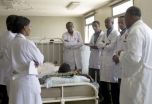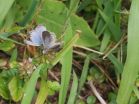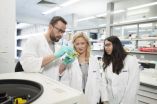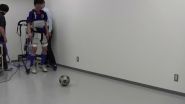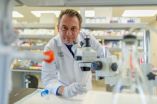(Press-News.org) A research group at the muscle physiology and cell biology unit, the Tokai University School of Medicine, Japan, led by Dr. Tetsuro Tamaki, have developed the stem cell isolation method from the skeletal muscle, termed skeletal muscle-derived multipotent stem cells (Sk-MSCs), which can differentiate into Schwann and perineurial/endoneurial cells, and vascular relating pericytes, endothelial and smooth muscle cells in the damaged peripheral nerve niche. Application of the Sk-MSCs in the bridging conduit of the long nerve gap injury resulted favorable axonal regeneration showing superior effects than healthy nerve autograft, which have been considered gold standard therapy. This also means that the sacrifice of healthy nerves, and the loss of related functions does not need.
Accidental loss of main peripheral nerve route, resulted severe loss of related motor and sensory functions, and if this is the case in arms or legs, largely affects the quality of life. Therefore, application of this method to the human therapy is likely to have a great significance.
The study, reported on Neural Regeneration Research (Vo. 9, No.14, 2014), also introduced that the Sk-MDSCs naturally express multiple neurotrophic and nerve/vascular growth factors. This ability facilitates growth of responsible nerve and vascular cells both in donor and recipient. This ability also suggested that the Sk-MSCs may be the useful tool as an adjuvant for tissue repair after the large resection surgery. In future research, the potential of human Sk-MSCs needs to be clarified. Dr. Tamaki stressed that mild cell isolation, and appropriate shorter term expansion culture may be a key factor to obtain better results, in particular, the human Sk-MSCs, and his group is currently investigating these issues.
INFORMATION:
Article: "Bridging long gap peripheral nerve injury using skeletal muscle-derived multipotent stem cells" by Tetsuro Tamaki (Muscle Physiology & Cell Biology Unit, Department of Regenerative Medicine, Division of Basic Clinical Science, Tokai University School of Medicine, Isehara, Japan)
Tamaki T. Bridging long gap peripheral nerve injury using skeletal muscle-derived multipotent stem cells. Neural Regen Res. 2014;9(14):1333-1336.
Contact: Meng Zhao
eic@nrren.org
86-138-049-98773
Neural Regeneration Research
http://www.nrronline.org/
Stem cells in the skeletal muscle promote the regeneration of severe nerve peripheral injury
2014-08-14
ELSE PRESS RELEASES FROM THIS DATE:
Up-regulation of neuronal alpha-1 adrenoceptors after peripheral nerve injury
2014-08-14
In a Perspectives paper published in Neural Regeneration Research (Vol. 9, No. 14), Professor Peter Drummond speculates about neuronal changes that might contribute to chronic pain after peripheral nerve injury. Professor Drummond and co-workers at Murdoch University, Perth Western Australia, discovered recently that the expression of α1-adrenoceptors increases on pain-signalling nerve fibers that survive peripheral injury. As these receptors boost neural excitability, an increase in their expression could intensify pain. After tissue injury, resident cells and other ...
New frontiers of fecal microbiota transplantation
2014-08-14
Bethesda, MD (Aug. 14, 2014) – Fecal microbiota transplantation (FMT) is one of the most innovative new treatments of the 21st century. Experts believe that this procedure, which transplants microbes from one human gut to another through fecal matter, could offer the cure to a vast range of diseases and shed new light on the role of the microbiome in gastrointestinal diseases. New research presented this weekend at the American Gastroenterological Association's 2014 James W. Freston Conference in Chicago, IL, highlights significant advances in this field, and confirms the ...
Scientists detail urgent research agenda to address chronic disease toll
2014-08-14
Health care systems that keep HIV patients from dying early in low- and middle-income nations need urgently to be repurposed to treat the chronic diseases that many of these patients now have, experts say.
According to recommendations resulting from a multidisciplinary conference sponsored by the National Institutes of Health, scientists and physicians in low- and middle-income countries should build on existing HIV research to study and treat chronic conditions. Patients once condemned to death by AIDS now suffer from noncommunicable diseases such as tuberculosis, cancer, ...
Study of Chilean quake shows potential for future earthquake
2014-08-14
Near real-time analysis of the April 1 earthquake in Iquique, Chile, showed that the 8.2 event occurred in a gap on the fault unruptured since 1877 and that the April event was not what the scientists had expected, according to an international team of geologists.
"We assumed that the area of the 1877 earthquake would eventually rupture, but all indications are that this 8.2 event was not the 8.8 event we were looking for," said Kevin P. Furlong, professor of geophysics, Penn State. "We looked at it to see if this was the big one."
But according to the researchers, ...
People fake to look authentic on social media
2014-08-14
Presenting an authentic image on social network sites (SNSs) includes an element of fakery according to a new study by researchers at Aalto University. During the study, researchers discovered that being authentic is very important for social media users. At the same time, users also admitted faking parts of their online image in order to conform to social norms and expectations.
By focusing on two SNSs, Facebook and Last.fm, the researchers came to the conclusion that being real is much more acceptable according to social norms.
Although both of these SNSs differ ...
Fukushima's legacy
2014-08-14
Following the 1986 Chernobyl nuclear power plant meltdown, biological samples were obtained only after extensive delays, limiting the information that could be gained about the impacts of that historic disaster. Determined not to repeat the shortcomings of the Chernobyl studies, scientists began gathering biological information only a few months after the disastrous meltdown of the Fukushima Daiichi power plant in Japan in 2011. Results of these studies are now beginning to reveal serious biological effects of the Fukushima radiation on non-human organisms ranging from ...
Immune cell discovery could help to halt cancer spread
2014-08-14
Melbourne researchers have revealed the critical importance of highly specialised immune cells, called natural killer cells, in killing melanoma cells that have spread to the lungs.
These natural killer cells could be harnessed to hunt down and kill cancers that have spread in the body.
The team, from the Walter and Eliza Hall Institute, also found natural killer cells were critical to the body's rejection of donor bone marrow transplants and in the runaway immune response during toxic shock syndrome.
The discoveries came after the team showed that a protein called ...
Newborns' genetic code sends infection distress signal
2014-08-14
Babies suffering from life-threatening bacterial infections such as sepsis could benefit from improved treatment, thanks to a ground-breaking study.
For the first time, researchers have been able to detect and decode a signal generated from a baby's DNA that can tell doctors whether or not a bacterial infection is present in the bloodstream.
The findings could help develop a test for bacterial infection in newborns, using a single drop of blood.
Immediate detection of such infections, which are a major cause of death among young children, is currently impossible ...
Bypass commands from the brain to legs through a computer
2014-08-14
VIDEO:
The right arm muscles and the locomotion center of the man are artificially connected through a computer. His legs are in a relaxed state. When he moves his right hand,...
Click here for more information.
Gait disturbance in individuals with spinal cord injury is attributed to the interruption of neural pathways from brain to the spinal locomotor center, whereas neural circuits locate below and above the lesion maintain most of their functions. An artificial connection ...
Aspirin may slow recurrence in breast cancer patients
2014-08-14
SAN ANTONIO (August 14, 2014) — New findings published today in the journal Cancer Research reveal that some postmenopausal overweight breast cancer patients who use common anti-inflammatory drugs like aspirin or ibuprofen have significantly lower breast cancer recurrence rates.
Researchers from the Cancer Therapy & Research Center at The University of Texas Health Science Center at San Antonio and the University of Texas at Austin began by examining blood serum from CTRC breast cancer patients, said CTRC oncologist Andrew Brenner, M.D., Ph.D.
Studying Blood Serum
They ...
